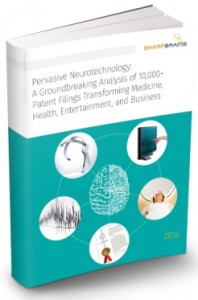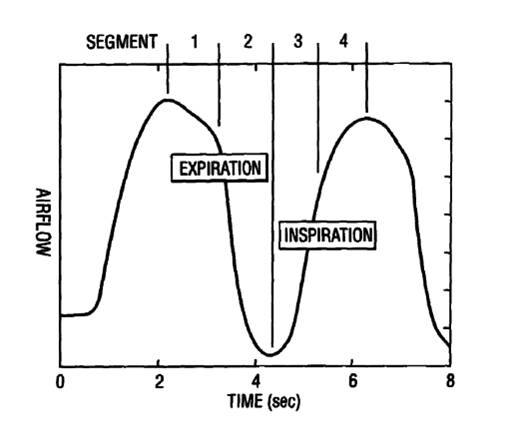Treating sleep-related breathing conditions–such as sleep apnea–via EEG brainwave analysis: Key neurotechnology patent #28
Today we discuss a 2007 patent assigned to Regents of the University of Michigan, the NIH and the US Deptartment of Health and Human Services.
U.S. Patent No. 7,190,995: System and method for analysis of respiratory cycle-related EEG changes in sleep-disordered breathing
- Assignee(s): Regents of the University of Michigan; NIH and U.S. Dept. of Health and Human Services
- Inventor(s): Ronald D. Chervin, Joseph W. Burns, Nikolas S. Subotic, Christopher Roussi
- Technology Category: EEG
- Issue Date: March 13, 2007
SharpBrains’ Take:
The ‘995 patent applies EEG technology to measuring a relevant feature to everyone’s life: breathing. Specifically, the respiratory measurement cycle may be used to treat sleep-related breathing conditions such as sleep apnea, hypopnea and sleep fragmentation. The difference in power of the EEG signal is used to calculate respiratory cycles at various brain wave frequencies (e.g., alpha, delta, etc.) and used to infer breathing problems or treatments to promote healthier sleeping patterns. The ‘995 patent recites 40 claims with many of the dependent claims encompassing various embodiments towards measuring and classifying respiratory cycle features. Despite a potential competitive design-around by using an EEG feature other than power for cyclical respiratory assessments, the numerous and broad claim coverage of an EEG application to sleep and breathing result of the ‘995 patent result contribute its assessment as a key non-invasive neurotechnology patent.
Abstract:
A system and method for determining respiratory cycle-related EEG changes (RCREC) for a subject with sleep-disordered breathing are provided. The method includes receiving an EEG signal from the subject using at least one sensor, and defining at least two respiratory cycle segments within each respiratory cycle. The method further includes determining an EEG power of the EEG signal during each of the at least two respiratory cycle segments, and determining RCREC by calculating a difference between a maximum EEG segment power and a minimum EEG segment power.
Illustrative Claim 38. A computer readable medium for determining respiratory cycle-related EEG changes (RCREC) in a subject, the medium comprising:
- computer readable instructions for determining an EEG power of a received EEG signal for a plurality of respiratory cycle segments, and determining RCREC by calculating a difference between a maximum EEG segment power and a minimum EEG segment power.
 To learn more about market data, trends and leading companies in the digital brain health space –digital platforms for brain/ cognitive assessment, monitoring and enhancement– check out this market report. To learn more about our analysis of 10,000+ patent filings, check out this IP & innovation neurotech report.
To learn more about market data, trends and leading companies in the digital brain health space –digital platforms for brain/ cognitive assessment, monitoring and enhancement– check out this market report. To learn more about our analysis of 10,000+ patent filings, check out this IP & innovation neurotech report.



